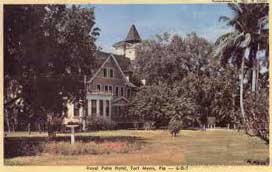The Florida Keys
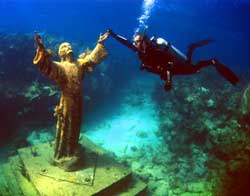 Key Largo, the "first" of Florida's Keys, has two state parks: Dagny Johnson Key Largo Hammock Botanical State Park, and a divers paradise, the John Pennekamp Coral Reef State Park, 50+ year old underwater park. Six miles offshore in the Florida Keys National Marine Sanctuary you will find the wreck of the Spiegel Grove, a 510-foot former US Navy ship intentionally scuttled in 2002 as the backbone for a new coral reef. No wonder locals call Key Largo the Diving Capital of the World! The Everglades National Park offers the perfect adventure for kayakers, birders and other eco-tourists.
Key Largo, the "first" of Florida's Keys, has two state parks: Dagny Johnson Key Largo Hammock Botanical State Park, and a divers paradise, the John Pennekamp Coral Reef State Park, 50+ year old underwater park. Six miles offshore in the Florida Keys National Marine Sanctuary you will find the wreck of the Spiegel Grove, a 510-foot former US Navy ship intentionally scuttled in 2002 as the backbone for a new coral reef. No wonder locals call Key Largo the Diving Capital of the World! The Everglades National Park offers the perfect adventure for kayakers, birders and other eco-tourists.
Islamorada, "Village of Islands" includes the islands of Lower Matecumbe Key, Upper Matecumbe Key, Windley Key and 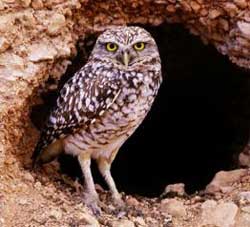 Plantation Key in the Florida Keys. Islamorada is considered the Sport Fishing Capital of the World due to the number of world records and the number of different species which can be caught within a short boat ride of town. The name "Islamorada", meaning "purple isle", is thought to come from early Spanish explorers.
Plantation Key in the Florida Keys. Islamorada is considered the Sport Fishing Capital of the World due to the number of world records and the number of different species which can be caught within a short boat ride of town. The name "Islamorada", meaning "purple isle", is thought to come from early Spanish explorers.
Marathon began in historical times as Cayo de Bacas or Vacas. Occasionally populated, Key Vaca eventually became Marathon after Flagler built the Overseas Railroad. Marathon was originally the name of one of the railroad station houses. Marathon is a major sports fishing destination, and also is home to the Burrowing Owl. The Turtle Hospital is also located here: a special facility devoted to the rescue, care and rehabilitation of injured Sea Turtles.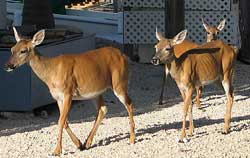 Big Pine Key in the Florida Keys is known for its Key Deer. If you are driving through the keys, you can not help noticing that you are approaching the National Key Deer Refuge because the speed limit changes from 45 MPH to 30 MPH at night. No records exist documenting the origin of the deer in the keys. It is believed that the deer migrated to the keys from the mainland many thousands of years ago, across a long land bridge.
Big Pine Key in the Florida Keys is known for its Key Deer. If you are driving through the keys, you can not help noticing that you are approaching the National Key Deer Refuge because the speed limit changes from 45 MPH to 30 MPH at night. No records exist documenting the origin of the deer in the keys. It is believed that the deer migrated to the keys from the mainland many thousands of years ago, across a long land bridge.
Key West is the southernmost city in the United States. The city is closer to Cuba than it is to Miami. The whole island is a bird sanctuary since there are many endangered species there. Key West has the most inhabitants of any of the keys. Of the 800 keys, only 30 are inhabited by people. All of the sand on the beaches of Key West were shipped in on barges from the Caribbean.

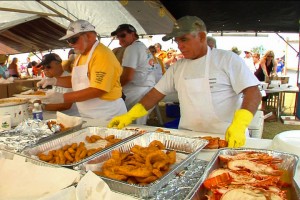 Marathon is a well known vacation destination, and about 10,000 people live there year round. Popular activities include boating, fishing and snorkeling. Regional air service is provided by Florida Keys Marathon Airport. Marathon is also a hub for Fed Ex.
Marathon is a well known vacation destination, and about 10,000 people live there year round. Popular activities include boating, fishing and snorkeling. Regional air service is provided by Florida Keys Marathon Airport. Marathon is also a hub for Fed Ex.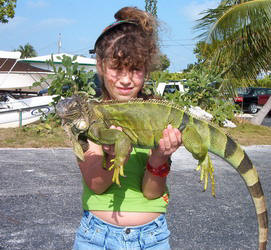 Annual Festivals
Annual Festivals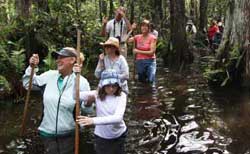
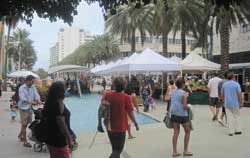 Lincoln Road has a beautiful 7-8 block pedestrian mall, with over 400 businesses, including Art Galleries, Restaurants, trendy shops, and nightclubs. You can find delicious food, from Cuban, to American, Mexican, and French.
Lincoln Road has a beautiful 7-8 block pedestrian mall, with over 400 businesses, including Art Galleries, Restaurants, trendy shops, and nightclubs. You can find delicious food, from Cuban, to American, Mexican, and French.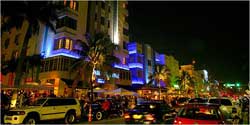
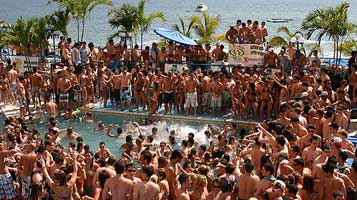 Like many popular vacation destinations, Fort Lauderdale became a stop on the Florida East Coast Railway which gradually extended along the entire east coast of Florida. The first passenger train arrived in Fort Lauderdale on February 22, 1896, and the rest, as they say is history.
Like many popular vacation destinations, Fort Lauderdale became a stop on the Florida East Coast Railway which gradually extended along the entire east coast of Florida. The first passenger train arrived in Fort Lauderdale on February 22, 1896, and the rest, as they say is history.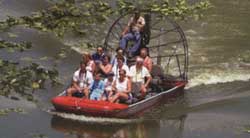 Fort Lauderdale was a winter vacation destination that literally exploded overnight in 1961 when Fort Lauderdale Beach became the college spring break destination as the direct result of the Hollywood hit movie 'Where the Boys Are', starring singer Connie Francis. Fort Lauderdale remained a major destination for college spring breakers well until the mid-1980s, and it continues today, though in lesser numbers.
Fort Lauderdale was a winter vacation destination that literally exploded overnight in 1961 when Fort Lauderdale Beach became the college spring break destination as the direct result of the Hollywood hit movie 'Where the Boys Are', starring singer Connie Francis. Fort Lauderdale remained a major destination for college spring breakers well until the mid-1980s, and it continues today, though in lesser numbers.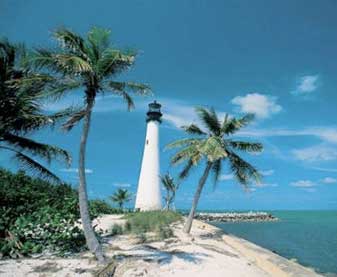 Miami began when Julia Tuttle convinced Standard Oil co-founder Henry Flagler to extend his railroad from central Florida to Miami. Once there, Flagler build a luxury hotel, the Royal Palm Hotel, and laid out the new town, creating an unique Florida vacation destination. Every winter, tourists came to the warm and sunny climate, and more hotels and resorts, such as the Biltmore were built to accommodate them.
Miami began when Julia Tuttle convinced Standard Oil co-founder Henry Flagler to extend his railroad from central Florida to Miami. Once there, Flagler build a luxury hotel, the Royal Palm Hotel, and laid out the new town, creating an unique Florida vacation destination. Every winter, tourists came to the warm and sunny climate, and more hotels and resorts, such as the Biltmore were built to accommodate them.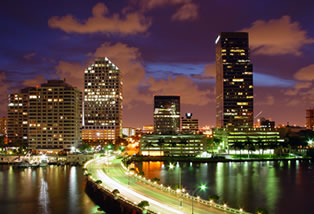 Tennis and golf are popular activities, as well as water sports, such as parasailing, windsurfing, wave-running and jet-skiing.
Tennis and golf are popular activities, as well as water sports, such as parasailing, windsurfing, wave-running and jet-skiing.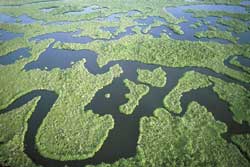 Nestled within the Ten Thousand Islands, Marco Island is the larges of the mostly uninhabited mangrove islands that stretch down to the southern tip of the Florida. These islands provide an unspoiled natural habitat that is a haven for saltwater fishermen, nature lovers, kayak and canoe paddlers, photographers and more.
Nestled within the Ten Thousand Islands, Marco Island is the larges of the mostly uninhabited mangrove islands that stretch down to the southern tip of the Florida. These islands provide an unspoiled natural habitat that is a haven for saltwater fishermen, nature lovers, kayak and canoe paddlers, photographers and more.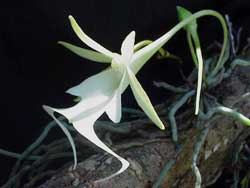 Swamp hikers who bravely take ranger-guided tours at the local Big Cypress National Preserve and Fakahatchee Strand Preserve State Park are often pleasantly surprised by the clear, flowing water, which cools the air. Nature has created the perfect system, two natural predators, the mosquito fish and the carnivorous bladderwort plant naturally feast on mosquito larva, which keeps the cypress swamps remarkably bug-free.
Swamp hikers who bravely take ranger-guided tours at the local Big Cypress National Preserve and Fakahatchee Strand Preserve State Park are often pleasantly surprised by the clear, flowing water, which cools the air. Nature has created the perfect system, two natural predators, the mosquito fish and the carnivorous bladderwort plant naturally feast on mosquito larva, which keeps the cypress swamps remarkably bug-free.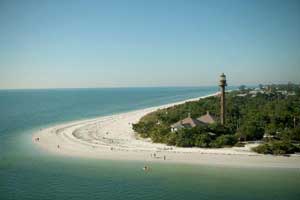 Sanibel is one of the unique barrier islands in Florida and due to it's unique east-west orientation the island has great sandy beaches and an abundance of shells. Every March, local residents and tourists gather to compare and appreciate shell collections and shell art at the annual
Sanibel is one of the unique barrier islands in Florida and due to it's unique east-west orientation the island has great sandy beaches and an abundance of shells. Every March, local residents and tourists gather to compare and appreciate shell collections and shell art at the annual 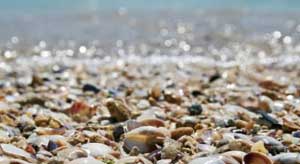 Beach rules on Sanibel Island stipulate that pets must be leashed, and must be cleaned uap after. Alcoholic beverages are prohibited November through May. No open fires and collecting of live shells is strictly forbidden. Basic restrooms are located at all public beach accesses. Some have picnic tables and showers, all have free handicap parking. Parking at Sanibel Island public beaches costs $2.00 an hour.
Beach rules on Sanibel Island stipulate that pets must be leashed, and must be cleaned uap after. Alcoholic beverages are prohibited November through May. No open fires and collecting of live shells is strictly forbidden. Basic restrooms are located at all public beach accesses. Some have picnic tables and showers, all have free handicap parking. Parking at Sanibel Island public beaches costs $2.00 an hour.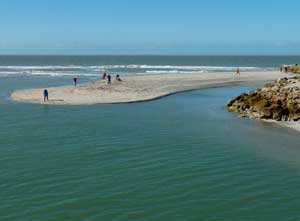 Captiva Island is quiet, and remote. Visitors to Captiva Island arrive here by choice, not accident, as Captiva Island is connected to the mainland through a series of bridges.
Captiva Island is quiet, and remote. Visitors to Captiva Island arrive here by choice, not accident, as Captiva Island is connected to the mainland through a series of bridges.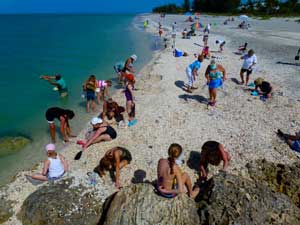
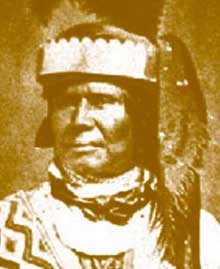 Fort Myers was established in 1850 as a military fort to fend off Seminole Indians that were massacring the area's few settlers. In 1858, after years of elusive battle, chief Billy Bowlegs and his warriors were persuaded to surrender and move west, and the fort was abandoned until 1863. In 1865 the fort was attacked unsuccessfully by a very small group of Confederates during the Civil War. After the war, the fort was again deserted.
Fort Myers was established in 1850 as a military fort to fend off Seminole Indians that were massacring the area's few settlers. In 1858, after years of elusive battle, chief Billy Bowlegs and his warriors were persuaded to surrender and move west, and the fort was abandoned until 1863. In 1865 the fort was attacked unsuccessfully by a very small group of Confederates during the Civil War. After the war, the fort was again deserted.